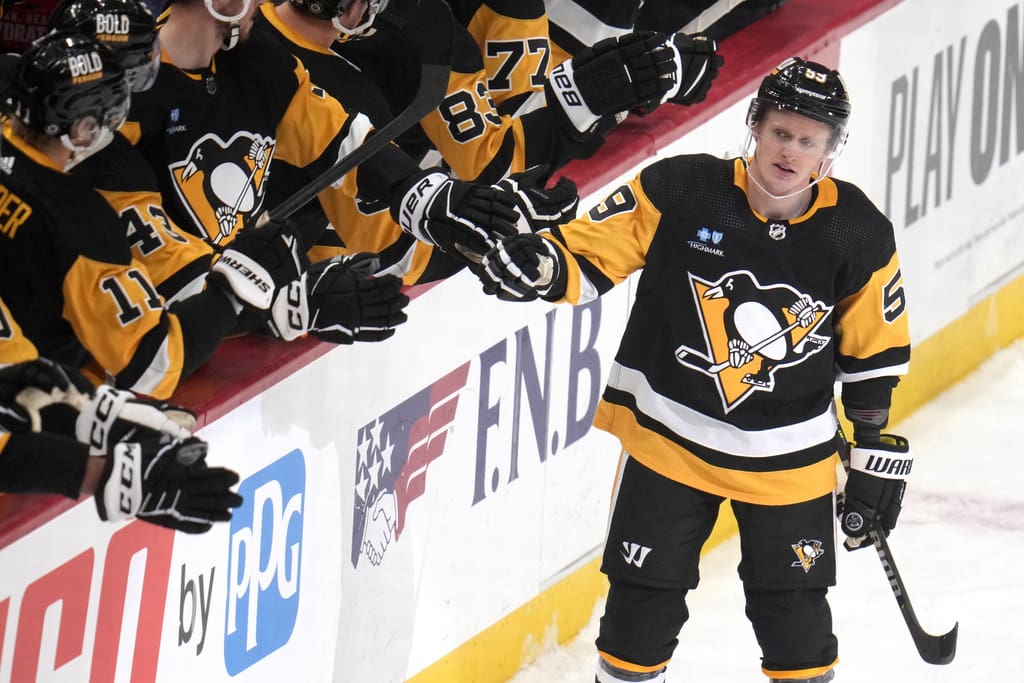NHL Trade Rumors
Penguins’ Cap Structure, Trade Deadline Big Chances to Improve & Avoid Rebuild

The Pittsburgh Penguins are rubbing the sleep from their eyes and arising from the slumber that nearly tanked their season. The Penguins are far from established in a playoff position, but their recent run of victories has brought them back to even with the wild-card contenders and opened the possibilities for the March 8 NHL trade deadline.
It also may change their outlook for the coming offseason.
The Toronto Maple Leafs new mega-contract for William Nylander opens a few more doors, even as it may negatively affect their discussions with Jake Guentzel.
While discussing the offseason in the same context as the trade deadline may seem like looking too far ahead, the two are inexorably linked. For a team that is aging out of contention and fighting time, any decision made now will have rippling effects in the immediate.
Currently, the team has about $200,000 of salary cap space, according to PuckPedia.com.
Jeff Carter ($3.125 million), Guentzel ($6 million), and Alex Nedeljkovic ($1.5 million) are slated to come off the books on June 30. Other players, such as Reilly Smith ($5 million) and Ryan Graves ($4.5 million), might be expendable pieces to further add to the team’s salary cap space.
If Penguins’ president of hockey operations/GM Kyle Dubas plays his hand well, the team could have millions for the NHL trade deadline and up to $20 million in salary cap space to go hunting for the 2024-25 season.
That kind of money can change a team’s trajectory in a hurry.
A Brinks truck with $20 million could be used to fortify the last chapters of Sidney Crosby, Evgeni Malkin, and Kris Letang. They could afford core players now and in the summer and need not waste capital on band-aids and retread rentals, which gobble up more cap space than provide production.
It will be a stark departure from the last management regime, which stockpiled secondary or tertiary players at premium prices.
In short, the Penguins can push their buggy up to the butcher’s case and take a good look at the steaks. They can wait to hit the candy aisle and clearance cart.
The Penguins’ lack of significant prospects and draft picks limits their ability to acquire rental players. And, really, that’s not a bad thing. The unique situation does open the door for hockey trades similar to that of Erik Karlsson, an elite talent who’s got a couple or few years remaining on their contract.
A winning core combined with the potential cap space allowed Dubas to snag Karlsson. Similar deals could be structured for other high-end talents.
The team might not get a better chance in this era to add premium talent like Calgary Flames All-Star center Elias Lindholm, defenseman Noah Hanifan, or give Toronto a jingle to reunite Dubas with Mitch Marner now that Toronto has committed hefty sums to Auston Matthews and Nylander.
Toronto’s recent eight-year splash deal for Nylander, which carries an $11.5 million annual cap hit, necessarily means they must sacrifice some talent. Sure, they could load up and sign Marner to a new deal beginning on July 1 for the 2025-26 season. Still, they would possibly venture into allocating more than 35% of their salary cap until the cap significantly grows again.
Toronto would surely need some less expensive but talented players. The Penguins have those.
Adding premier talent down the middle or on the back end is a great way to shortcut years of painful rebuilding. Dubas’s shrewd moves to acquire Karlsson in August immediately showed he understood the balance of the now and the future.
Insider rumors persist that Tampa Bay Lightning stalwart Steve Stamkos and the team will split, possibly by March 8, if not via free agency.
With so many teams already pressed against the salary cap for next season, the Penguins won’t get a better chance to acquire players like Lindholm or (on a much shorter term) Stamkos.
Both would be solid second-line players capable of playing center. Lindholm would be a long-term solution as a top-six center.
The Penguins’ biggest needs will be for a top-four defenseman if Ryan Graves doesn’t resume the role (or P.O Joseph doesn’t solidify it) and a third-line winger if Valtteri Puustinen doesn’t lock down the spot.
Sure, Dubas could stroll down that candy aisle and grab a few players with big names who might help them this season and then leave in the summer. Rentals like defenseman Shayne Gostisbehere or wingers Anthony Duclair or Vladimir Tarasenko could help now, but they would deplete the already limited resources.
Exactly how much they would improve the Penguins is debatable.
Dubas and the Penguins have options. With some patience and restraint, they could have a lot more options very soon and, in the process, mitigate much of the pain that comes with a franchise teardown and rebuild.
It’s at least possible.












